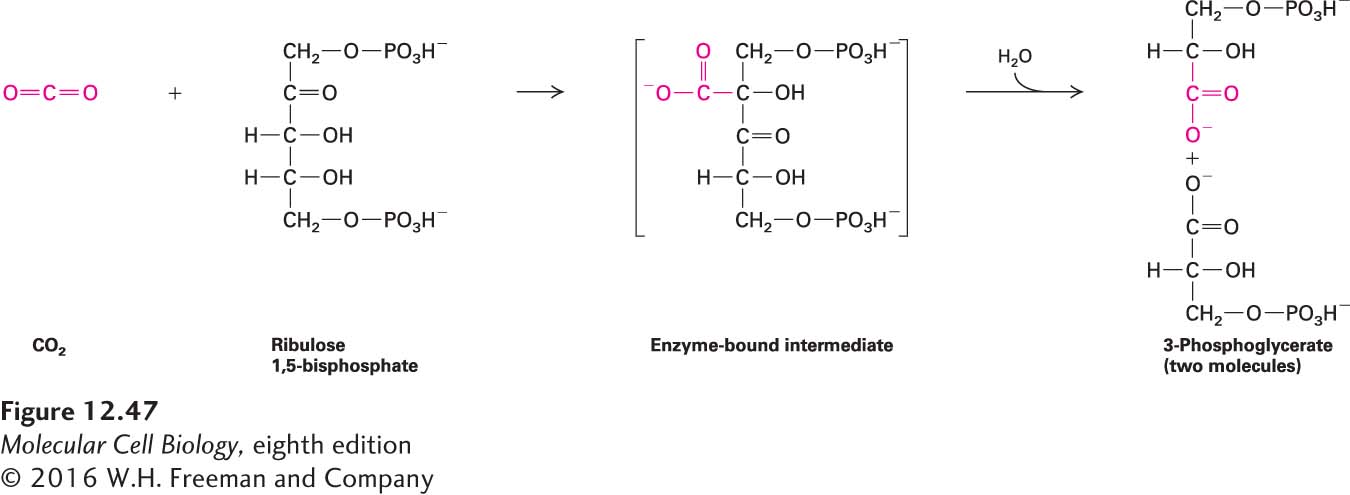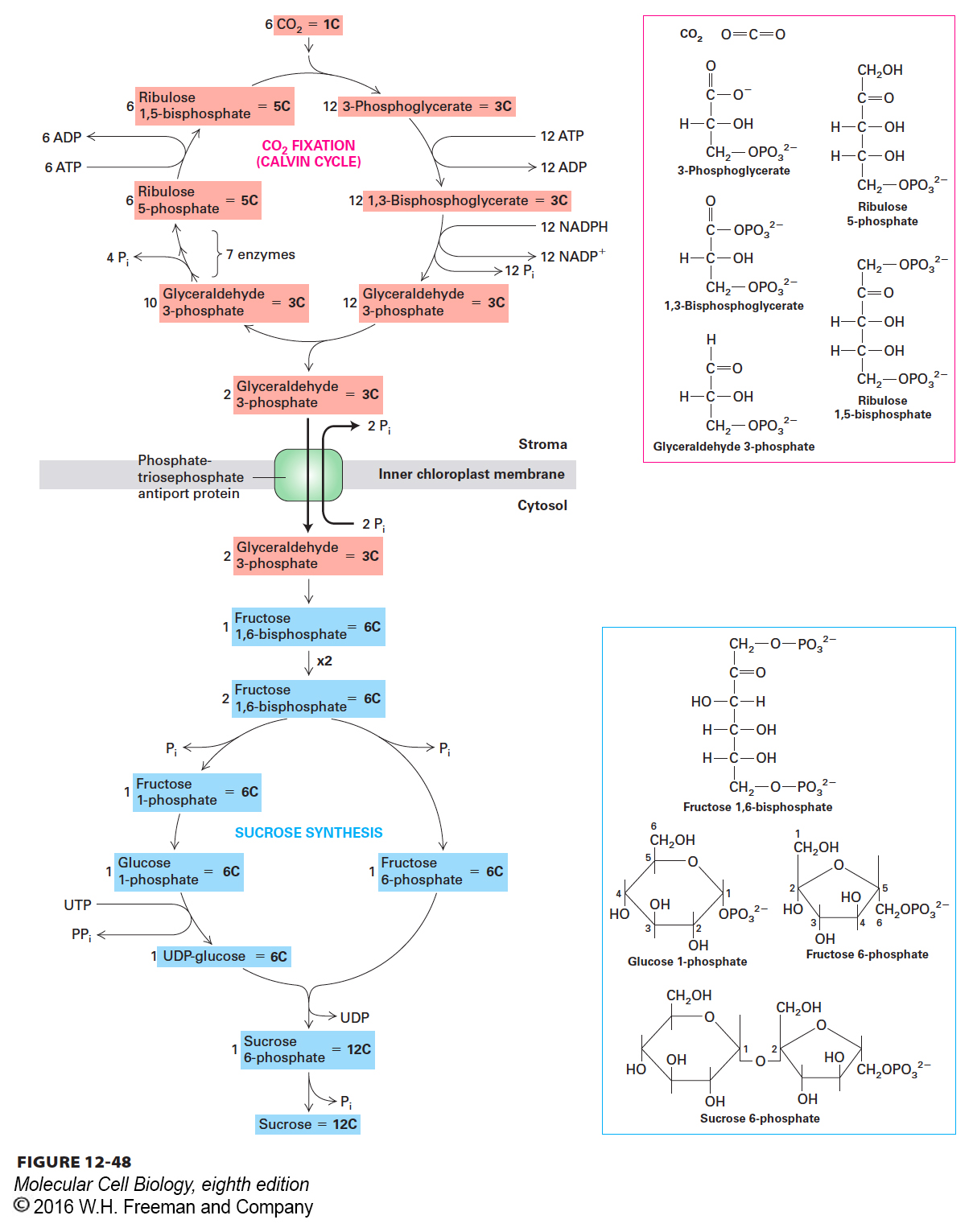Rubisco Fixes CO2 in the Chloroplast Stroma
The enzyme ribulose 1,5-bisphosphate carboxylase, or rubisco, incorporates CO2 into precursor molecules that are subsequently converted into carbohydrates. Rubisco is located in the stroma of the chloroplast. This enzyme adds CO2 to the five-carbon sugar ribulose 1,5-bisphosphate to form two molecules of the three-carbon compound 3-phosphoglycerate (Figure 12-47). Rubisco is a large enzyme (~500 kDa) whose most common form is composed of eight identical large and eight identical small subunits. One subunit is encoded in chloroplast DNA; the other, in nuclear DNA. Because the catalytic rate of rubisco is quite low, many copies of the enzyme are needed to fix sufficient CO2. Indeed, this enzyme makes up almost 50 percent of the soluble protein in a chloroplast and is believed to be the most abundant protein on Earth. It is estimated that rubisco fixes more than 1011 tons of atmospheric CO2 each year.

FIGURE 12-47 The initial reaction of rubisco that fixes CO2 into organic compounds. In this reaction, catalyzed by ribulose 1,5-bisphosphate carboxylase (rubisco), CO2 condenses with the five-carbon sugar ribulose 1,5-bisphosphate. The products are two molecules of 3-phosphoglycerate.
When photosynthetic algae are exposed to a brief pulse of 14C-labeled CO2 and the cells are then quickly disrupted, 3-phosphoglycerate is radiolabeled most rapidly, and all the radioactivity is found in the carboxyl group. Because CO2 is initially incorporated into a three-carbon compound, the Calvin cycle is also called the C3 pathway of carbon fixation (Figure 12-48).

FIGURE 12-48 The pathway of carbon during photosynthesis. (Top) Six molecules of CO2 are converted into two molecules of glyceraldehyde 3-phosphate. These reactions, which constitute the Calvin cycle, occur in the stroma of the chloroplast. Via the phosphate/triosephosphate antiporter, some glyceraldehyde 3-phosphate is transported to the cytosol in exchange for phosphate. (Bottom) In the cytosol, an exergonic series of reactions converts glyceraldehyde 3-phosphate to fructose 1,6-bisphosphate. Two molecules of fructose 1,6-bisphosphate are used to synthesize one molecule of the disaccharide sucrose. Some glyceraldehyde 3-phosphate (not shown here) is also converted to amino acids and fats, compounds essential for plant growth.
The fate of 3-phosphoglycerate formed by rubisco is complex: some is converted to hexoses incorporated into starch or sucrose, but some is used to regenerate ribulose 1,5-bisphosphate. At least nine enzymes are required to regenerate ribulose 1,5-bisphosphate from 3-phosphoglycerate. For every 12 molecules of 3-phosphoglycerate generated by rubisco (a total of 36 C atoms), 2 of them (6 C atoms) are converted to 2 molecules of glyceraldehyde 3-phosphate (and later to 1 hexose), whereas 10 of them (30 C atoms) are converted to 6 molecules of ribulose 1,5-bisphosphate (Figure 12-48, top). The fixation of 6 CO2 molecules and the net formation of 2 glyceraldehyde 3-phosphate molecules require the consumption of 18 ATPs and 12 NADPHs generated by the light-requiring processes of photosynthesis.



